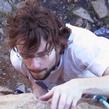
Last 10 changes
peermore
peermore
peermore
aboutchris
augury
socialtext
pictures
socialtext
socialtext
aboutchris
122 words
253 defs
project4
Revision:
[ 2002-04-29 00:49:38 ]
[ 2002-04-06 19:26:57 ]
[ 2002-03-27 19:40:18 ]
[ 2002-03-27 14:25:33 ]
[ 2002-03-27 14:24:21 ]
[ 2002-03-22 14:04:01 ]
[ 2002-03-21 01:43:26 ]
Backlinks:
plate
project4
springalgo
springdatamodel
springfreeze
springreqs
cspring
uvizjournal
---------- Forwarded message ---------- Date: Fri, 22 Mar 2002 13:24:34 -0500 (EST) From: cdent@burningchrome.com To: katy@indiana.edu, jlbaumga@indiana.edu Subject: notes from our gathering It frequently helps me to clarify sit down meetings with an after-meeting message. Like an after-dinner mint. Makes sure we are all on the same page and such. So, find herein my distillation of the things we talked about this morning, plus some additional comments. Please let me know if I got anythign wrong, or this made you think of anything. Thanks. -=-=- We seemed to all agree that the long range plan is a tool which does Spring amongst nodes that can represent both clusters of documents (using document very generally) and documents themselves with the ability to dynamically adjust which partition of the cluster hierarchy is being viewed, and expand nodes that represent clusters, by clicking or similar mechanism, as needed. We agreed that this was outside immediate scope. We also agreed that to reach that goal a more formal and abstract data representation and object model is required. In that model nodes and edges become abstract representations of data and graphical display is separated out to another layer. We hope this will have a postive performance impact, but aren't sure. It will certainly make the code _much_ more flexible. To facillitate a more abstract representation, a more general input method is needed. An XML input that supports nodes and edges strikes me as reasonable. That's a graph. The Graph Exchange Language (GXL) is a developing standard for such things which might be valuable. More information about it is available here: GXL/">http://www.gupro.de/GXL/ (I'm particularly interested in this because it is getting a lot of talk amongst the knowledge modelling people I've been paying attention to lately. It may be inapppropriate for our immediate purposes, but potentially valid in the long run.) The immediate steps discussed are: - modify the object model to support extensible nodes and edges in dataspace and graphical space - support several visual aspects such as color, size, shape - linking to external documents or resources in some fashion (much of this has been done in something called touchgraph. touchgraph is not a spring algorithm per say, but a generic node and edge representor: http://touchgraph.sourceforge.net/ I suspect there is a great deal that can be learned from that source.) - have a hierarchical object model so that nodes can nest other nodes and some nodes can be considered fully leafs while others are containers. this should facillitate clustering: a cluster node can graphically represent N nodes, but just be one object on screen, with its own label. - Adjust the XML representation to nodes and edges, in some fashion. There was lot more detail on the long range view, including: - visual cluster hierarchy adjust views - a slider that allows slipping up and down the hierarchy, while expanding or collapsing the nodes showing the clusters - a sort of transparent flow from one node to the nodes included is considered neato - two sliders on on the interface - one for cluster level - one for edge threshhold - click to expand clusters, with error check on large nodes -=-=- Okay, that's my interpretation of the high points. It's probably different from yours given my own biases. What's different? Thanks. (apologies for the probably many typos)